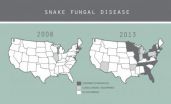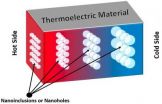(Press-News.org) (PHILADELPHIA) -- Adequate hydration via a saline drip is essential during surgery, but recent reports suggest that getting the balance of salt and water just right could have an important impact on patient recovery. In the largest study of its kind researchers at Thomas Jefferson University found that a slightly saltier intravenous drip (hypertonic saline), and lower total volume of fluid received, reduced the overall rate of complications by 25 percent after the complex Whipple surgery for pancreatic cancer.
"This relatively minor change in intravenous fluids has had a tremendous effect on the overall complication rate for our patients," says first author Harish Lavu, M.D., Associate Professor of Surgery at Thomas Jefferson University. "Based on these findings we have already changed our practice in the operating room to use hypertonic saline," he added.
Saline delivered intravenously during and after surgery helps to maintain a patient's fluid balance and blood pressure within the appropriate range. The increased salt concentration in the hypertonic saline is designed to keep the body in equilibrium by helping to reduce fluid buildup in the lungs, interstitial spaces and swelling in the extremities.
The hypertonic saline draws out the excess fluid that builds up in these tissues. "Too much swelling can compromise the delivery of blood and oxygen to the organs. That reduction can slow the healing process," says Dr. Lavu.
The current study is the largest of its kind and shows a benefit when hypertonic saline is used for the Whipple operation, which can take from to 5-9 hours to perform. Patients undergoing this operation for pancreatic cancer can have complications such as blood clots, pneumonia, wound infection, urinary tract infections, and others.
A total of 264 patients were enrolled in the study, with 128 receiving standard fluid and 131 receiving a hypertonic saline solution. By examining all of the complications together, the researchers found a 25 percent reduction in overall complications in the group that received hypertonic saline. In absolute numbers, 93 patients in the hypertonic group had complications, compared with 123 patients in the standard fluid group.
"We are confident that this change in our surgical process will help our patients recover faster with fewer complications," says senior author Charles J. Yeo, M.D., The Samuel D. Gross Professor and Chair of the Department of Surgery at Thomas Jefferson University.
INFORMATION:
The authors report no conflicts of interest.
For more information, contact Edyta Zielinska, 215-955-5291, edyta.zielinska@jefferson.edu.
About Jefferson
Thomas Jefferson University (TJU), the largest freestanding academic medical center in Philadelphia, is nationally renowned for medical and health sciences education and innovative research. Thomas Jefferson University includes the Sidney Kimmel Medical College (SKMC), one of the largest private medical schools in the country and ranked among the nation's best medical schools by U.S. News & World Report, the Graduate School of Biomedical Sciences and the Jefferson Schools of Nursing, Pharmacy, Health Professions, and Population Health. Jefferson University Physicians is TJU's multi-specialty physician practice consisting of the full-time faculty of SKMC. Thomas Jefferson University partners with its clinical affiliate, Thomas Jefferson University Hospitals.
Article reference: H. Lavu et al., "The HYSLAR trial: A prospective randomized controlled trial of the use of a restrictive fluid regimen with 3% hypertonic saline (HYS) versus lactated ringers (LAR) in patients undergoing pancreaticoduodenectomy," Annals of Surgery, 2014.
Saltier intravenous fluids reduce complications from surgery
Infusing a saltier saline solution during and after surgery decreases overall complication rate for a complex procedure
2014-07-15
ELSE PRESS RELEASES FROM THIS DATE:
Defects in fatty acid transport proteins linked to schizophrenia and autism
2014-07-15
Using diverse methodologies, neuroscientists from the RIKEN Brain Science Institute report that defects in Fatty Acid Binding Proteins (FABPs) may help to explain the pathology in some cases of schizophrenia and autism spectrum disorders. After identifying mutations in FABPs from patients, the group led by Senior Team Leader Takeo Yoshikawa determined that the genetic disruption of Fabps in mice mimics disease behaviors seen in patients. This work suggests that disruption of FABPs could be a common link underlying some forms of these two prevalent mental disorders.
Published ...
Smarter ads for smartphones: When they do and don't work
2014-07-15
NEW YORK — Brands spent $8.4 billion on mobile advertising in 2013, and that number is expected to quadruple to $36 billion by 2017, according to eMarketer. But do mobile display ads — those tiny banner ads that pop up in your smartphone's web browser — actually work? Researchers at Columbia Business School have found that, despite their size, mobile ads can have a big effect on consumers who are in the market for certain types of products.
"Digital advertising in mobile channels is experiencing explosive growth," said Miklos Sarvary, co-director of the Media Program ...
NASA sees Typhoon Rammasun's eye staring at Visayas, Philippines
2014-07-15
Early on July 15, Typhoon Rammasun began making landfall in the eastern part of the central Philippines and NASA's Aqua and TRMM satellites spotted the 20 nautical-mile-wide (23 mile/37 km) eye of the storm close to landfall.
Typhoon Rammasun was making landfall in the Visayas region. Visayas is located in the central Philippines.
The Tropical Rainfall Measuring Mission or TRMM satellite passed over Rammasun on Tuesday, July 15, 2014 at 04:10 UTC (12:10 a.m. EDT) and measured rainfall occurring throughout the storm. TRMM found moderate rainfall (about 35 mm)/1.4 inches ...
Scientists gear up to fight deadly snake fungal disease
2014-07-15
CHAMPAIGN, Ill. — Researchers have developed a faster and more accurate way to test for infection with Ophidiomyces ophiodiicola, a fungus that is killing snakes in the Midwest and eastern United States. The test also allows scientists to monitor the progression of the infection in living snakes.
The researchers reported on the test at the 2014 Mycological Society of America Annual Meeting.
"We need people to know that they don't have to anesthetize an animal to collect a biopsy sample or, worse yet, euthanize snakes in order to test for the infection," said University ...
This week from AGU: Dust models, Arctic Ocean waves, floods and climate change
2014-07-15
From AGU's blogs: Global climate models fail to simulate key dust characteristics
Climate models that simulate the airborne African dust that influences Atlantic Ocean hurricanes are not up to the task of accurately representing the characteristics of that dust, according to a new study accepted for publication in Geophysical Research Letters.
From AGU's journals: Surface waves contribute to ice retreat in Beaufort Sea
Surface waves, created by blowing wind, play a role in energy and nutrient transport and also shape coasts through erosion. Because the Arctic Ocean ...
New UK study helps scientists understand melanoma development
2014-07-15
LEXINGTON, Ky. (July 15, 2014) — A new study by University of Kentucky researchers shows how a genetic defect in a specific hormonal pathway may make people more susceptible to developing melanoma, the deadliest type of skin cancer.
Fair-skinned people who tend to burn (rather than tan) from sun exposure have a much higher risk for melanoma than darker-skinned people. On the surface, it appears that the amount of melanin, the natural substance in the skin that determines pigment and acts as the skin's "natural sunscreen," would be the only determinant of melanoma risk. ...
Directly visualizing hydrogen bonds
2014-07-15
WASHINGTON D.C., July 15, 2014 – Using a newly developed, ultrafast femtosecond infrared light source, chemists at the University of Chicago have been able to directly visualize the coordinated vibrations between hydrogen-bonded molecules -- the first time this sort of chemical interaction, which is found in nature everywhere at the molecular level, has been directly visualized. They describe their experimental techniques and observations in The Journal of Chemical Physics, from AIP Publishing.
"These two-dimensional infrared spectroscopy techniques provide a new avenue ...
New feathered predatory fossil sheds light on dinosaur flight
2014-07-15
LOS ANGELES—A new raptorial dinosaur fossil with exceptionally long feathers has provided exciting insights into dinosaur flight. A paper published in Nature Communications on July 15, 2014 asserts that the fossil—discovered by an international team led by Natural History Museum of Los Angeles County (NHM) paleontologist Dr. Luis Chiappe—has a long feathered tail that Chiappe and co-authors believe was instrumental for decreasing descent speed and assuring safe landings.
The 125-million-year-old dinosaur, named Changyuraptor yangi, was found in the Liaoning Province ...
New materials for future green tech devices
2014-07-15
WASHINGTON D.C., July 15, 2014 -- From your hot car to your warm laptop, every machine and device in your life wastes a lot of energy through the loss of heat. But thermoelectric devices, which convert heat to electricity and vice versa, can harness that wasted heat, and possibly provide the green tech energy efficiency that's needed for a sustainable future.
Now, a new study shows how porous substances can act as thermoelectric materials—pointing the way for engineering the use of such materials in thermoelectric devices of the future.
About 70 percent of all the energy ...
Widespread support for rapid HIV testing in dental surgeries -- new study
2014-07-15
More than 80 per cent of oral health patients are willing to receive rapid HIV-testing in dental settings, which could help reduce the spread of the HIV according to a groundbreaking study revealed today at a Sydney University HIV Testing Symposium.
The first of its kind study of 521 Sydney-based dental patients assessed patients' willingness to undergo rapid HIV testing in dental settings, their preference for HIV testing-type type and their willingness to pay for the test.
Rapid HIV testing is a screening test that swiftly detects the presence of HIV antibodies in ...
LAST 30 PRESS RELEASES:
Interaction of climate change and human activity and its impact on plant diversity in Qinghai-Tibet plateau
From addressing uncertainty to national strategy: an interpretation of Professor Lim Siong Guan’s views
Clinical trials on AI language model use in digestive healthcare
Scientists improve robotic visual–inertial trajectory localization accuracy using cross-modal interaction and selection techniques
Correlation between cancer cachexia and immune-related adverse events in HCC
Human adipose tissue: a new source for functional organoids
Metro lines double as freight highways during off-peak hours, Beijing study shows
Biomedical functions and applications of nanomaterials in tumor diagnosis and treatment: perspectives from ophthalmic oncology
3D imaging unveils how passivation improves perovskite solar cell performance
Enriching framework Al sites in 8-membered rings of Cu-SSZ-39 zeolite to enhance low-temperature ammonia selective catalytic reduction performance
AI-powered RNA drug development: a new frontier in therapeutics
Decoupling the HOR enhancement on PtRu: Dynamically matching interfacial water to reaction coordinates
Sulfur isn’t poisonous when it synergistically acts with phosphine in olefins hydroformylation
URI researchers uncover molecular mechanisms behind speciation in corals
Chitin based carbon aerogel offers a cleaner way to store thermal energy
Tracing hidden sources of nitrate pollution in rapidly changing rural urban landscapes
Viruses on plastic pollution may quietly accelerate the spread of antibiotic resistance
Three UH Rainbow Babies & Children’s faculty elected to prestigious American Pediatric Society
Tunnel resilience models unveiled to aid post-earthquake recovery
Satellite communication systems: the future of 5G/6G connectivity
Space computing power networks: a new frontier for satellite technologies
Experiments advance potential of protein that makes hydrogen sulfide as a therapeutic target for Alzheimer’s disease
Examining private equity’s role in fertility care
Current Molecular Pharmacology achieves a landmark: real-time CiteScore advances to 7.2
Skeletal muscle epigenetic clocks developed using postmortem tissue from an Asian population
Estimating unemployment rates with social media data
Climate policies can backfire by eroding “green” values, study finds
Too much screen time too soon? A*STAR study links infant screen exposure to brain changes and teen anxiety
Global psychiatry mourns Professor Dan Stein, visionary who transformed mental health science across Africa and beyond
KIST develops eco-friendly palladium recovery technology to safeguard resource security
[Press-News.org] Saltier intravenous fluids reduce complications from surgeryInfusing a saltier saline solution during and after surgery decreases overall complication rate for a complex procedure





